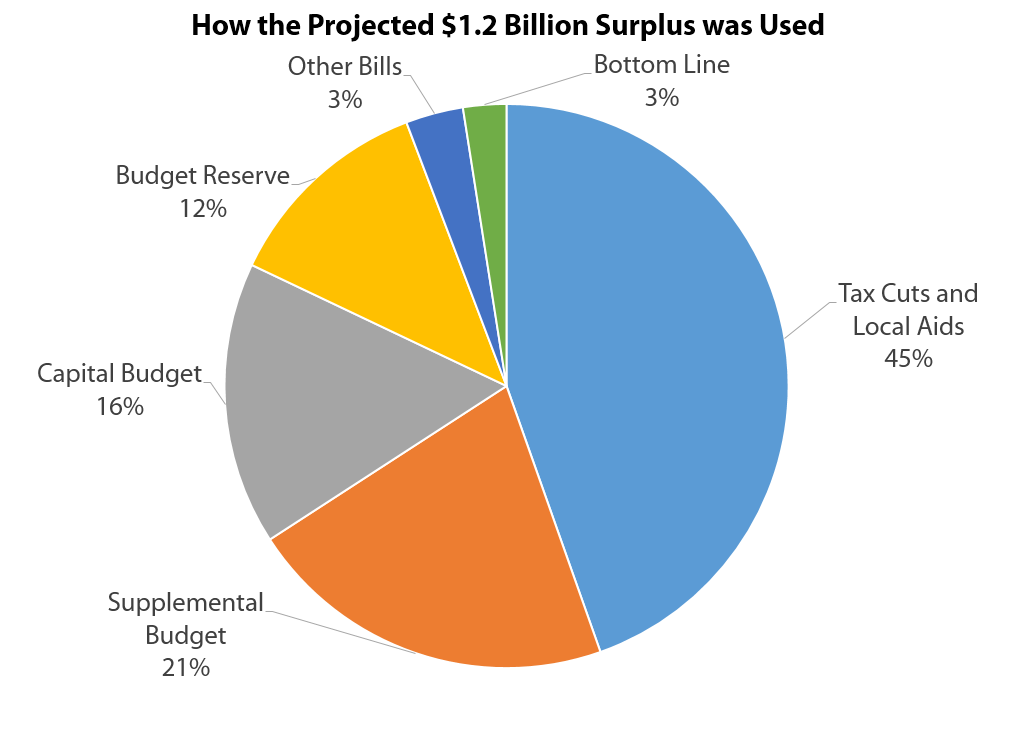After more than a decade of frequent budget deficits, a state budget surplus opened up the opportunity for different kinds of conversations in the 2014 Legislative Session.
The state’s two-year budget was set last year, but a projected $1.2 billion positive balance for the FY 2014-15 budget cycle allowed policymakers and advocates to discuss improving our tax system, increasing funding for critical services and saving for a rainy day.

By the time it adjourned, the Legislature allocated most of the surplus through two major tax bills, a supplemental budget bill and a capital investment (or bonding) bill. These bills included provisions to expand opportunity for more Minnesotans and make our tax system work better.
The largest portion of the surplus – 45 percent – went to the tax bills, which total $550 million in FY 2014-15 and over $1 billion in the next budget cycle.
- The first tax bill (House File 1777) reduced income taxes for many Minnesotans through provisions that mirror federal tax changes, and repealed three business-to-business sales taxes. It also increased the Working Family Credit by about 25 percent, making our tax system fairer and helping families working at low wages to make ends meet.
- The second tax bill (House File 3167) increased property tax refunds for homeowners and renters, and increased state aids to some cities and counties.
About one-fifth of the surplus went to the $262 million supplemental budget bill (House File 3172). The bill included investments in improving the quality of life for vulnerable Minnesotans and expanding opportunity, including:
- A 5 percent increase in reimbursement rates for home- and community-based services for seniors and people with disabilities.
- Grants to advance health equity.
- Improved educational opportunities under the Minnesota Family Investment Program.
- Increased funding for schools.
- Improvements to early learning scholarships.
Policymakers also passed a substantial capital budget bill (House File 1068), commonly called the bonding bill because the state issues bonds to pay for capital investment projects. But this year, policymakers also used 16 percent of the surplus to pay directly for capital projects.
The surplus was also used to prepare for the next economic downturn through a $150 million addition to the state’s budget reserve. Healthy reserves are necessary to meet the needs of Minnesota residents even in the face of the unexpected.
Finally, three percent of the surplus went to other bills with a financial impact, and about three percent was left “on the bottom line”, or unallocated. This was a wise hedge against uncertainty, as the surplus was only a projection, not money already on hand.
-Clark Biegler